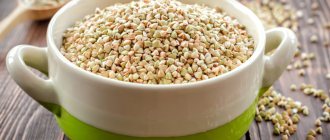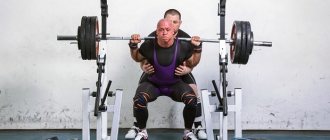© Microgen — stock.adobe.com
Share:
Tai Bo is an aerobic program that combines punching and kicking with escapes and dance steps. The name comes from a combination of “taekwondo” and “boxing,” but in reality the program most closely resembles Muay Thai punches and basic aerobics.
The lesson is quite old, the author of the original program is Billy Blanks, who founded the first training center using this method. The birth of this type of fitness is quite well mythologized. There are stories on the Internet that Billy starred in a movie with Bruce Lee. In reality, everything was much more prosaic.
The essence of tai bo
What kind of lesson is tai-bo and what is its peculiarity? The author of the program simply decided to make money on the cult of thinness that covered America in the 80s. He happened to be at the right time, where Pamela Anderson and Paula Abdul were coming out, and correctly understood the desires of the target audience. The women wanted to finally start eating normally at least sometimes. But ordinary aerobics from Jane Fonda did not give them such an opportunity. An hour of dancing in swimsuits and leg warmers and minus a measly 300-400 kcal. Who will be happy with this?
Billy decided to use his experience as a karateka and mass entertainer. Contrary to popular stories in RuNet, he did not act with Bruce Lee, but was his fan. Just a guy from a large family who did karate, then ended up in Hollywood as a stunt choreographer in low-profile films, and then made a fortune from people’s love of food.
Tai-bo allows you to “remove” up to 800 kcal in an hour , because all the blows are quite intense, and exits are performed through soft jumps. The point is that for an hour the student beats an imaginary opponent in all available ways - with legs, arms, elbows, knees, and so on. It's much more fun and interesting than many other aerobic classes. Billy quickly became a star.
But he was a much worse businessman than the “father” of CrossFit, Greg Glassman. Billy was able to create a program, release a series of training videos, which were quickly published in open sources, and become a celebrity trainer. But he couldn’t sell the franchise. If you go to a tai bo class somewhere in central Russia, most likely the lesson will be created by a local group program trainer and will only be based on popular martial arts strikes.
Tai-bo is very similar to fitbox, but these are different lessons, their main differences are presented in the table below:
| Tai-bo | Fitbox |
| Without equipment | The blows are delivered to the bag or “paws” |
| No jumping jacks or burpees, only soft jumps and jumps allowed on most levels | Jumping jumps and burpees are often included in the strength part of the lesson; they are used to pump up explosive strength. |
| Part of the lesson is devoted to pumping up the abs and exercises on the floor. | Depends on the instructor, the lesson can be simple, interval, with or without strength training |
| Contains quite a lot of simple aerobic steps - side to side, grapevine, forward-backward steps | Completely based on boxing footwork, jumping back and forth |
Muay Thai and modern “Fightings without rules”
Well, what about modernity, and how successfully is Muay Thai used in MMA? So much so that knee and elbow strikes are mainly taken from this technique. Well, such names as Anderson Silva, Alistair Overeem or Jose Aldo are known to all MMA fans. All three are now fighting in the UFC, surprising opponents and spectators with gorgeous knee strikes, low kicks and unexpected elbow strikes. By the way, Anderson Silva will fight Kelvin Gastelum on November 25th.
And Alistair Overeem will fight his next fight against Francis Ngannou at UFC 218, which will take place on December 2 in Detroit.
When talking about the use of Muay Mai techniques in MMA, one cannot fail to mention the undefeated UFC light heavyweight champion Jon Jones. He always said that his role model was Anderson Silva, and the largest reach in the promotion allowed him to throw mind-blowing elbows, stunning opponents on the stand and literally scoring on the ground.
Unfortunately, it is difficult to say when his next fight will be, since he was caught twice for doping, and problems with cocaine stripped him of his title. It's a sad but terribly common story: a love of illegal substances instantly ruins the careers of even the most talented fighters.
Tai Bo Training Basics for Beginners
Tai Bo is considered an appropriate class for an overweight beginner, but this is not entirely true. People with a BMI over 30, poor posture and weak core muscles should first undergo a general physical training course. They should do Pilates and an elliptical machine 3-4 times a week before starting intense shadow pounding. This will help protect against ankle and knee problems that plague beginner aerobics enthusiasts in heavy weight classes.
Everyone else should understand that:
- You can practice at home using a video if you have normal body control, lifting your leg does not put you on the nearby sofa, and you have enough motivation to practice on your own.
- It is better for those who have problems with self-discipline to join the group.
- It is better to train 2-3 times a week if the goal is to burn fat, increase mobility, endurance and improve health.
- As an addition to strength and cardio training, you can attend tai bo once a week.
- It is better to choose a class that you will have time for. In terms of content, they are not as different as dance or step classes.
© Microgen — stock.adobe.com
Contraindications
There are no special contraindications for practicing this type of aerobics. Anyone can practice ki-bo, regardless of age, level of training and gender. All you need to do is pay close attention to yourself due to the fairly high workload. If you have health problems, then inform the coach about it. Ki-bo movements exist for both beginners and advanced.
At first it will be difficult for beginners, since stable breathing is necessary, and due to the intense work of many muscle groups, it is difficult to maintain even breathing. But after a couple of weeks of constant training, breathing correctly will become commonplace for you.
When training, there is quite a serious load on the joints. It is better to refrain from exercising for those people who suffer from joint diseases. The second contraindication applies to all types of aerobics - diseases of the cardiovascular system. Aerobics, which contains elements of martial arts, brings to work almost all muscle groups, which contributes to the formation of a harmonious physique. In addition, exercise has a beneficial effect on reaction.
Does tai bo develop endurance?
Tai-bo develops endurance, as it consists of multiple repetitions of the same type of work . Punches and kicks are combined into chains; the group performs series rather than single strikes. True, such endurance will be more useful for “life” and as general physical training before moving on to boxing or martial arts.
Such lessons do not provide much in terms of strength endurance. So if your goal is to get better at the gym or CrossFit, you should do it.
How to cook Pad Thai
I will briefly describe the cooking process that we have been observing every evening for the past two months.
Place the frying pan on the fire and pour oil into it. Throw in pieces of raw chicken (or shrimp, or seafood) and fry. Then a raw egg is broken into it. Next add noodles and sauce. Fried. Add krill, nuts and bean sprouts. Again everything is thoroughly fried and mixed. Literally 5 minutes and you're done!
They decorate in different ways: in the same place we are always surprised with something. Cucumbers cut into rings and a slice of lime remain unchanged, although it is very rare, but sometimes they forget to add it. Sometimes they add chopped tomatoes, sprinkle with additional nuts and krill, and put them in a separate bag of bean sprouts. In general, depending on your mood, apparently the main thing is that the food is always very tasty!
Here we got almost all the extra goodies
We filmed the process of preparing Pad Thai, although not where we always get it, but at the Teprazit market. There they prepared it for us a little differently and with tofu. But I think in general the cooking process will be clear to you
https://youtu.be/Mjkz6uVkn6o
Positive aspects of tai bo
The lesson gives a lot of positivity, because you will beat your imaginary enemy with a crowd of comrades. Isn’t this what we all dream about when we’re stuck in a traffic jam, sitting in a meeting, or doing the same type of low-paying job?
But, seriously, this is a good option for “pumping up” your health:
- relieves stress and emotional tension;
- pumps the heart, and in a fairly high-impact mode;
- improves vascular trophism;
- increases joint mobility and ligament elasticity;
- improves motor skills - stretching and coordination of movements.
Tai-bo can also contain elements for actively pumping up the abs or a small series of strength exercises. Billy Blanks' original videos feature moves with light weights, like a short body bar. But this lesson cannot be called a power lesson.
Endurance development
Tai Bo training requires a high level of physical endurance. After all, even the creator of this technique, seven-time karate champion Billy Blanks, in his best years, almost collapsed from fatigue after working for only 10 minutes at a pace set by energetic music. What can we say about beginners, many of whom cannot run 200 meters without shortness of breath.
A person who comes to group Tai Bo classes without appropriate preparation will most likely be disappointed due to the fact that such an intense load was beyond his strength. And if you go all out at the same time, you can get the effect of overtraining or even more dangerous consequences for health. High-intensity tai-bo training is especially dangerous for children with weak physical development. Getting into the rhythm of such training should be gradual.
If your level of physical endurance leaves much to be desired, then about 2 months before starting Tai Bo classes, start regular cardio training. For this, fast walking followed by running is perfect, when part of the distance is covered at a fast pace, and part by running at a slow or medium pace. This type of load is universal, it is easy to dose, focusing on your own feelings.
Technique for performing individual elements
Technical excellence is not required in Tai Bo. You should maintain a neutral back, that is, shoulder blades pulled toward the spine, a tucked stomach, a slightly tilted pelvis forward, and “soft” knees.
Initial stance
The feet are slightly wider than the shoulders, the weight is in the center of the body and is projected in the center of the arch of the foot. Initially, the back is straight, the shoulder blades are pulled towards the spine. Before practicing striking techniques, it is worth slightly rounding your shoulders forward to ensure the movement of the joints in a safe trajectory.
© Africa Studio— stock.adobe.com
Straight punch with left and right hand
Also known as a jab, it is performed with a hand that is aligned with the forward leg. You need to stand apart, bring your right leg forward, bring your arms to your shoulders and perform a short sharp blow with your right hand forward. The legs are changed with a slight jump, and a left-sided kick is performed in the same way.
https://youtu.be/tHaDjexMIKA
Side kick with left and right hand
Three side impacts:
- An uppercut - that is, a blow from bottom to top, to the jaw, is performed from a straight stance along an elliptical trajectory with a turn of the body.
https://youtu.be/wV-hiRs09gw
- A cross is a strike from the far hand in a straight strike stance, it is performed with a turn of the supporting “back” leg and is aimed at the body. The cross should be a strong blow due to the inertia of the body.
- Hook - a side blow with the near hand to the head from shoulder level. In the original lessons, tai bo is used quite rarely, since Billy does not recommend raising your shoulders high during aerobics.
© Africa Studio— stock.adobe.com
“Leave” (slope) left and right
Grooming is the transfer of weight from one leg to the other while simultaneously moving the body towards the loaded leg. It looks like a “pendulum” with its body from left to right and vice versa. One learns from the “feet wider than shoulder width” stance; first a person learns to bend along an arcuate path without transferring weight to the leg, then with transfer. The second level is walking with a chain of additional steps, then the tilt of the body is repeated several times in the same direction in which the steps are performed.
Kicks
Kicks are used in every workout.
Strike with the right and left knee
Knee strikes in Tai Bo are the closest to how Muay Thai strikes are done. The kicker transfers his body weight to one leg, releases the other, bends it at the knee joint and brings the knee to the shoulder of the same name. In the aerobic lesson, this kick has the format “standing exercise to pump up the abs.”
© Microgen — stock.adobe.com
Kick back
The back kick is performed as a hip extension with additional force from the knee. You need to transfer your body weight to the supporting leg, release the kicking leg and strike back with your heel, sharply extending your leg at the knee.
https://youtu.be/mb7oAK-Q0R4
Kick forward
Learning to strike begins with bringing the knee forward, then adding extension in the knee joint and striking the heel forward.
Kicks to the side
Side kick - after transferring the weight to the supporting leg, a kick is performed from the knee to the side, the heel goes to the side, the body leans in the opposite direction.
https://youtu.be/sEQq0TXzShM
Rond, or roundhouse, is similar to the side one, only the movement of the heel goes “from the inside out”, in an arc. The blow falls to the body or head.
How to do Thai boxing classes
A large number of activities in this sport are devoted specifically to honing strikes. Athletes repeat each strike thousands of times, at a certain point bringing the action to automaticity.
After this, the next stage of training is carried out in which. Practiced and studied techniques begin to be combined into 2-4 powerful strikes. The entire fight consists of precisely such developed combinations.
Particular attention is also paid to speed and endurance exercises. This is necessary to make all techniques more agile and sharp. If you watch the main championships, you will notice that all athletes with high titles have a lean physique.
Bundles of elements
To warm up in tai-bo, a slightly modified aerobic combination can be used - two additional steps to the right and left and swings of the arms along the body, plus two additional steps to the right and left and synchronized forward punches.
The most commonly used combinations in tai-bo are:
- “Jab, cross, hook, uppercut,” that is, a direct blow, for example, with the right hand, a side left, a side “finishing” with the right and from bottom to top with the left.
- Two blows with the left knee, a combination of hands with the right, jump, repeat with the other leg.
Tempo links will help increase intensity:
- 30 seconds of very fast running with high knees, 30 seconds of very fast forward punches while standing, the same amount of low straight kicks with alternating legs.
- 30 seconds of side punches, 30 seconds of uppercuts with a quick change of hands in the stance.
- 30 seconds of back kicks with changes, 30 seconds of side kicks with changes.
The tempo link works at the end of the workout.
An hour-long class from Billy Blanks himself:
https://youtu.be/1XA7kwFmSQo
Classic Mai Tai cocktail recipe
Compound:
- 60 ml Jamaican rum 17 years old;
- 20 ml Orange Curacao liqueur;
- 20 ml almond syrup;
- 10 ml caramel syrup;
- juice of one lime.
Preparation:
Pour the ingredients into a shaker and shake with ice. Strain into a low wide glass. Garnish with a mint sprig and lime zest.











